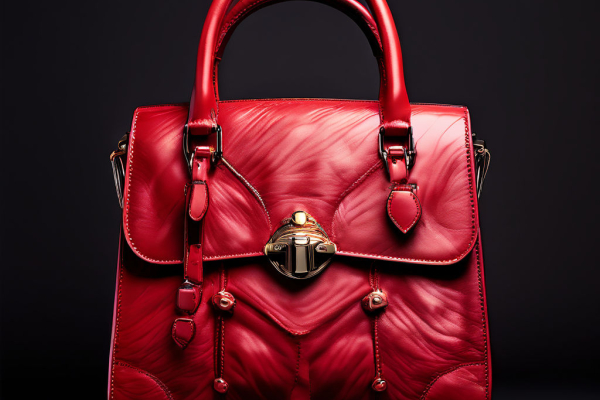5 Iconic Handbags Worth Investing In

Just a few years ago, luxury brand handbags, except for Hermès of course, were not considered serious assets or investment items. However, the pandemic years have changed perceptions, and today such handbags only increase in value at auctions and resale platforms, with some models doubling in price compared to their original cost.
According to The RealReal, designer handbags increased on average by 32% compared to 2020. Brands like Hermès, Louis Vuitton, and Chanel saw even higher increases, up to 55%. This might sound contradictory in the fashion context, where the rule is that yesterday's must-have and pricey items can drop by 80% tomorrow. However, iconic handbags seem to be an exception. Besides their high price, which emphasizes the owner's status, they always remain desirable across generations, from mothers to daughters.
Let's delve into what makes "iconic handbags" and which investments are worth considering to ensure a handbag retains its value beyond the store threshold, as explained by stylist and fashion columnist Yegor Voronkin.
Louis Vuitton Speedy
The oldest bag in our ranking, its history dates back to the early 20th century. In 1930, LV introduced the sensational soft suitcase bag, Keepall, which immediately captured the hearts and wallets of all lovers of beautiful and practical luggage. Many photos from the travels of celebrities of that time feature this bag.
The success of Keepall was so overwhelming that in 1932, Louis Vuitton introduced the Speedy bag—a reduced version of the famous Keepall travel trunk designed by Georges Vuitton, the founder's son.
Initially, this capacious city bag with short handles made of the brand's material with logos was only released in a 30 cm size. Later, due to complaints from Georges's friend Audrey Hepburn that the bag was too large for daily use, they released a 25 cm size specifically for her. Eventually, sizes of 20, 35, and 40 centimeters were introduced, all adorned with the iconic Damier imprint from LV.
Lady Dior by Christian Dior
The history of this beauty began in 1994. Despite myths, it had nothing to do with Princess Diana. Created by the then Creative Director of Dior, Gianfranco Ferré, the Chouchou bag (from French—favorite) was originally intended for France's First Lady, Bernadette Chirac, who was often seen with it in public in the mid-90s.
However, during an official visit by the Princess of Wales to France, Madame Chirac decided to give Diana a unique bag as a gift. Diana loved the Chouchou so much that, with Bernadette's permission, she ordered several bags in different colors.
As Princess Diana was considered a fashion icon whose style was eagerly copied, items she wore instantly became the most desired. Therefore, it didn't take long for the French beauty to succeed, and a few years later, Dior's management decided to rename the Chouchou to Lady Dior in honor of the princess.
After Princess Diana's tragic death, Lady Dior became a cult item and immediately increased in value. Over the past years, its price has risen on average by 10-15% annually, and this trend seems unstoppable.
Today, the bag is available in several basic colors and sizes, also as an addition to fashion shows, and as Special Editions in collaboration with famous artists and other creatives. Prices for the Lady Dior start at €3,100 for the mini size.
Chanel 2.55
Chanel's rectangular quilted bag, which can be worn "hands-free," was invented by Mademoiselle Chanel herself over half a century ago. As Chanel said: "I got tired of carrying my handbags, and I kept losing them."
Its name—reflecting the date of its creation: February 1955. While the motivation behind it is clear, the moods that inspired Mademoiselle are quite interesting: the burgundy lining replicates the color of the clothes worn by the monastery's wards where Gabrielle herself grew up, it's also needed to make it easier to find things inside; the external pocket—for storing theater tickets, as Chanel loved the theater and often attended it; the signature chain copied from the chain on which the nuns of the monastery carried the keys.
Chanel's parent company has been raising prices for some of its most popular bags in times of high consumer demand (Christmas and New Year). This policy only increases the exclusivity of the product and demand for it.
According to the Jefferies Group investment firm, the 2.55 bag was worth $7,400 in June 2021, and now its market price starts at $9,500. However, demand exceeds supply, and some positions of the iconic 2.55 bag are truly hunted.
Hermès Birkin and Kelly
The Holy Grail of the handbag world, the most coveted and expensive in the world—iconic bags from Hermès. Birkin and Kelly bags are released annually in limited editions, the volume of which the company keeps in the strictest secrecy. It is known for certain only that each item is provided with a separate serial number registered in the Hermès database, preventing counterfeiting.
The brand also creates an aura of inaccessibility through selective sales, as for some time the fashion house has canceled the possibility of making bags to order. Moreover, Birkin and Kelly are simply not displayed on the counter, except in flagship stores, so to see the coveted model, the buyer needs to contact the seller. And only at the discretion of the latter will you be able to see the "icon." This marketing strategy shapes a certain image of the item and gives it a super prestigious status.
Hermès's main star—Birkin—has been produced in France since 1984. Each bag takes 18–20 hours of manual work and uses only select calf or exotic leather. In most cases, the hardware for Birkin bags is made of palladium or gold.
The iconic model was dedicated to the 60s singer and actress Jane Birkin. According to the myth circulated by the press, the bag appeared thanks to a chance meeting in the airplane salon of Jane and the then head of the Hermès brand, Jean-Louis Dumas.
If we believe the myth, we can judge for ourselves by the cosmic price tag on these bags. The model was immediately liked by the public, and demand for the novelty exceeded supply. Then the brand's management came up with a brilliant marketing strategy with queues for the coveted item.
According to Luxury Daily, the price of Birkin bags has increased by over 500% over the last 30 years, with an average annual increase of 14.2%. These figures make this bag a reliable investment that grows in value more than gold. Today, the price for a Birkin bag starts at $10,000 for the basic 25 size.
The muse of the second Hermès "icon," the Kelly model, was the Oscar-winning Hollywood actress, Hitchcock's muse, and Princess of Monaco—Grace Kelly.
Like Lady Dior, at the beginning of its history in 1933, the bag was named Sac à dépêches (French—everyday). And, by the way, it was not popular at all.
Everything changed in 1956 when Princess of Monaco chose her, guided by a completely practical goal—to hide her pregnancy from the paparazzi. Thanks to the large size of the bag, Grace managed to do this completely unnoticed until the sixth month.
As a result, Sac à dépêches appeared on the covers of leading media outlets around the world, and demand for it skyrocketed. Forward-thinking Hermès executives immediately decided to name the bag after the princess, giving it the name Kelly.
This model existed in its unchanged form until 2009 when it was modified to have a more rigid bottom and a more comfortable shoulder strap. Today, Kelly bags can have eight sizes: from 15 (5.9 inches) to 50 centimeters (20 inches). The lock, keys, and hardware are made of white or yellow gold, and it takes from 18 to 25 hours to work on the bag.
Last year, Kelly bags increased in price by 13%, and if we take the past decade, by 108%. Today, people are willing to invest in "sup" in a song, someone—in valuable securities and precious metals. However, Yegor believes that investing should be in something that brings pleasure and will delight the heart, and a good handbag is the best proof of that.









